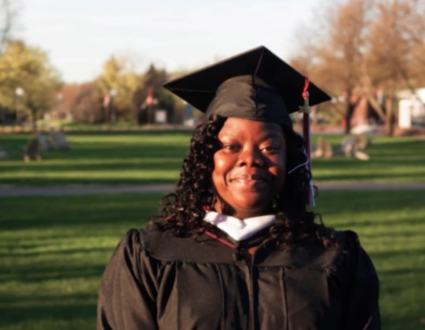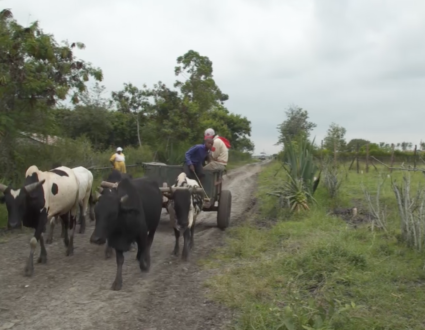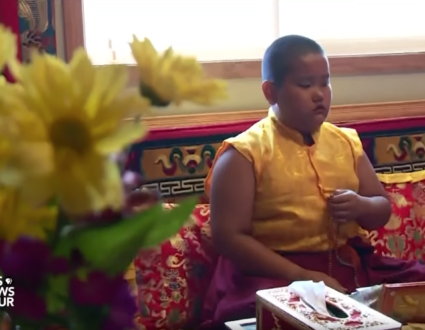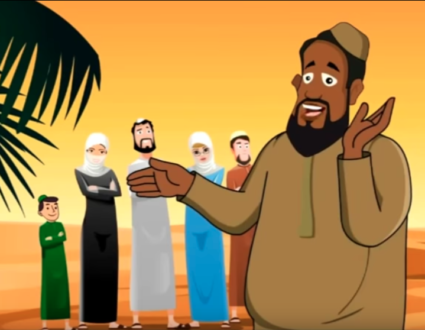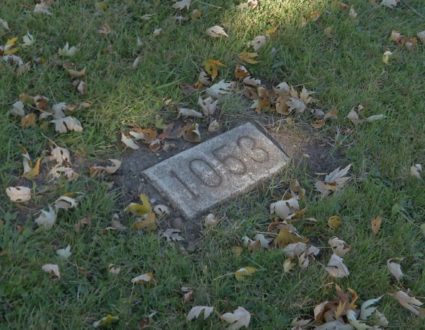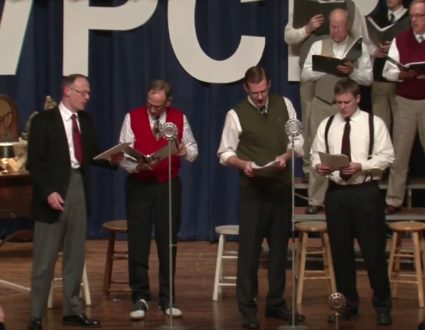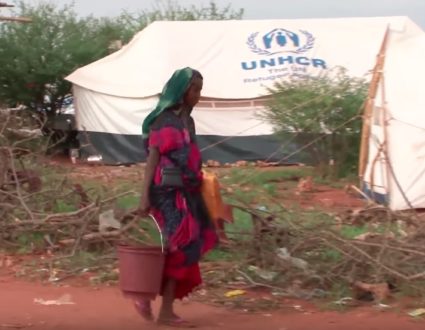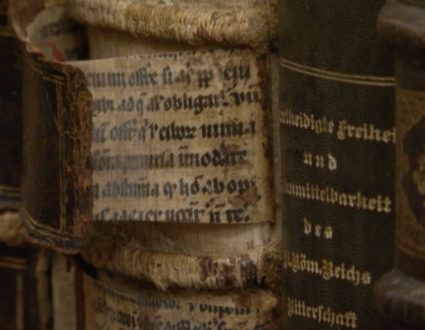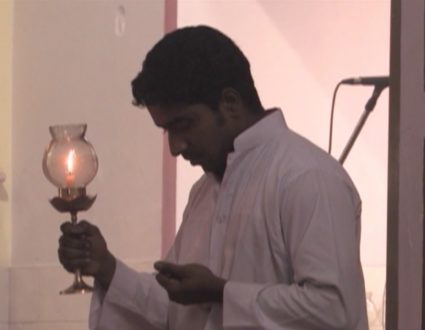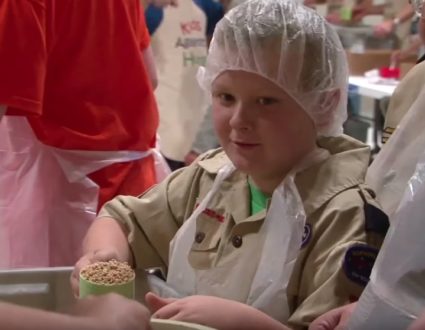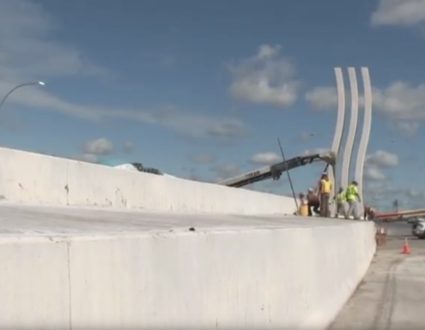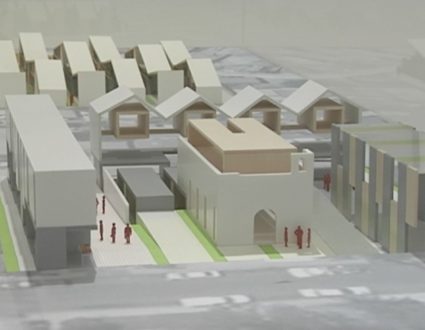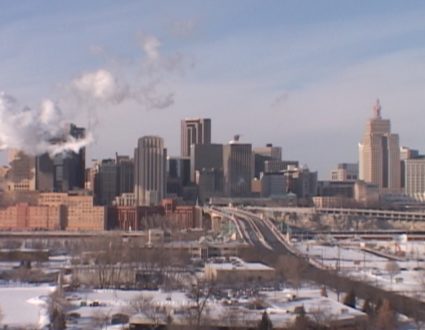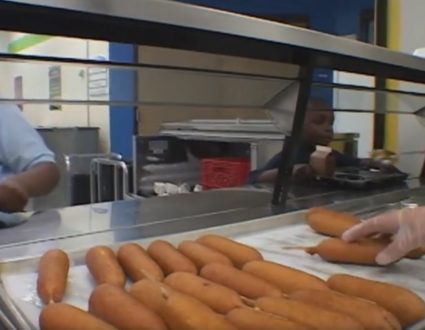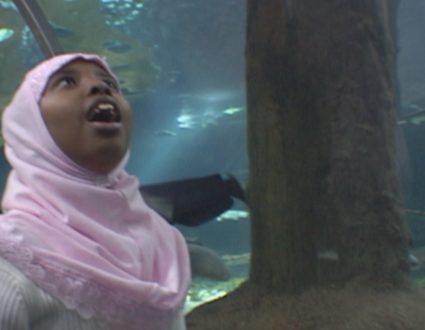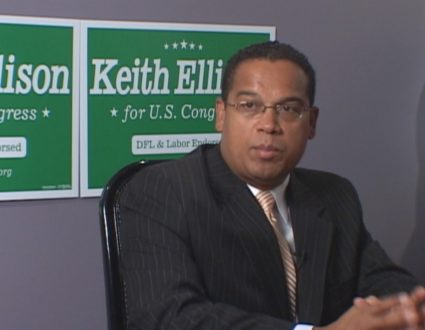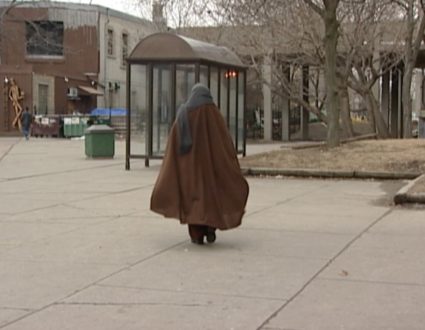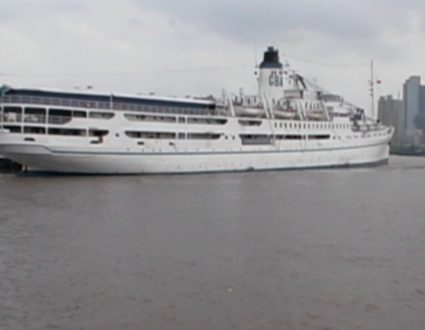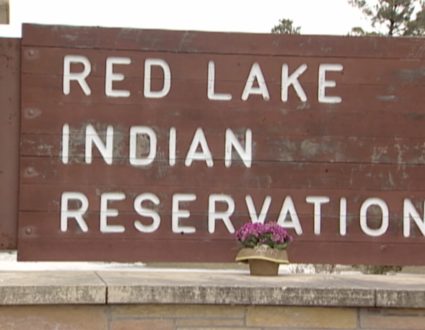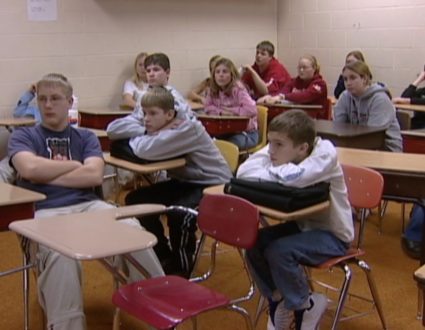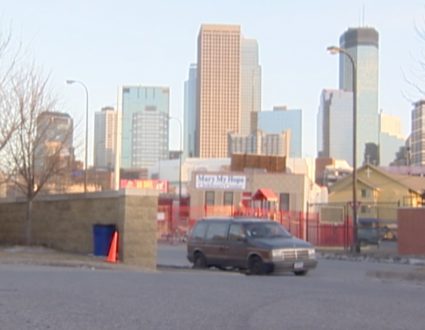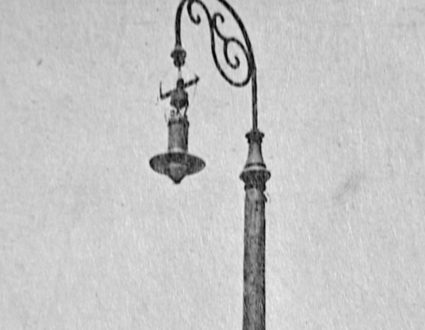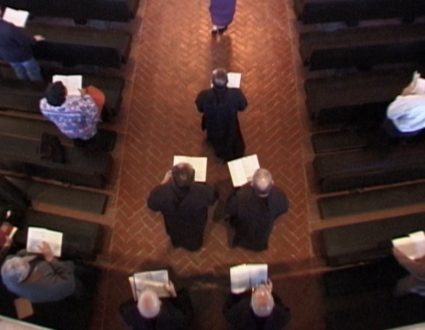Amna Nawaz:Well, next week marks the one-year anniversary of George Floyd’s murder in Minneapolis. His death at the hands of police touched off global protests and a worldwide artistic response.Special correspondent Fred de Sam Lazaro reports from Minneapolis.It’s part of our series Race Matters: America After George Floyd and our ongoing arts and culture coverage, Canvas.
Fred de Sam Lazaro:On plywood and sidewalks, brick walls and windows, creative expressions from this year of racial reckoning now envelop the city that sparked a movement.In the days following his death, George Floyd’s image became an icon around the world. Here in the city of Minneapolis, there’s been an explosion of public art, featuring Floyd’s face, his last words, and on a broader theme of racial justice.Artist Peyton Scott Russell grew up near 38th Street and Chicago Avenue in South Minneapolis, the intersection where George Floyd was killed on May 25, 2020. Peyton remembers the first time he watched the video of Floyd’s death.
Peyton Scott Russell:I just kept seeing my father’s face on George’s face. I thought I was alone in how I felt, the anger that I felt in that moment.And I was just — oh, I wanted to go out and physically protest. And then I had a few people tell me that I had a stronger voice than to go out and physically protest, which was my art voice, as a street artist.
Fred de Sam Lazaro:So, Peyton got to work on what would become one of the most recognized depictions of George Floyd, a 12-foot black-and-white mural that, for the past year, has been perched just above the spot where Floyd drew his last breath.
Peyton Scott Russell:There were times that I was weeping painting the picture, and I had to take breaks. And seeing that face that large and painting it that way with that black and white was really profound to me as I painted it.My original thought was, I was going to install this at night as an act of street art anonymously, and paint Mr. Floyd’s face as large as I could, as a way to say, look what you did. You know, look, just put it somewhere that was just really intrusive, as an obstacle.My first idea was to bolt it into the middle of the street on the intersection of 38th and Chicago.
Fred de Sam Lazaro:But Peyton realized a stiff breeze could knock the mural over or it could be taken by the city. So, he arrived at 38th and Chicago, and a group of about 30 people, some strangers, helped bolt it to the bus shelter, where it sits today.
Peyton Scott Russell:I have been contacted to give permission to use that piece in a number of backgrounds and stories.And I have been really careful about, am I really morally that person to say yes or no who can use this and who can’t? Because I painted it for the community, and I needed to let it go and let the community own it. And that’s what really street art is all about.
Fred de Sam Lazaro:Over the past 12 months, countless pieces have been left at the intersection now known as George Floyd Square, posters and handwritten notes, flower bouquets and drawings.Some have made their way here to a pop-up exhibition near the square called Still Here, Unstolen, Unbroken.Jeanelle Austin is one of the square’s lead caretaker. We spoke to her at the Say Their Names Cemetery, a makeshift memorial for Black people killed by police. It’s just steps from the exhibit.
Jeanelle Austin:I like to call it creative expressions of pain and hope, instead of art, and really honoring the people who have laid offerings down, first and foremost, as protest and then also as public grief.Everything is somebody’s offering. Therefore, nothing is thrown away.
Fred de Sam Lazaro:Austin had a specific vision, remind people of the emotion during those early days of protest.
Jeanelle Austin:We are building a re-memory. The space itself, the offerings themselves calls people into a place where they remember where we were, they remember where they were, and they are then commissioned to continue the work of racial justice.
Fred de Sam Lazaro:It was kind of like an embrace that pulled people back to the time?
Jeanelle Austin:Exactly.
Fred de Sam Lazaro:Austin hopes to eventually raise funds for a permanent space large enough to fit all the offerings, as well as a traveling exhibit.But she’s been deliberately careful about the sources of that funding. She chose not to take money from the city of Minneapolis.
Jeanelle Austin:When I look at the story of the lynching of George Floyd, I see a city employee on city time that killed a man.
Gulgun Kayim:It’s holding those two contradictions. It’s saying, can we trust you?
Fred de Sam Lazaro:Gulgun Kayim, the city’s director of arts, culture and the creative economy, says the killing of George Floyd broke down the trust it took years to build between the city, local artists and underserved residents.
Gulgun Kayim:These are the literal communities we’re in every day.Our work is at 38th and Chicago. And looking at what happened, it really was a sense of despair on my part, in seeing all that hard work really disappear with the action of one person.
Fred de Sam Lazaro:After Floyd’s killing and the unrest, Kayim’s office repurposed $100,000 in grants for artists responding to the events.One went to Creatives After Curfew, a collective that painted a series of murals across the city. Minneapolis native Leslie Barlow is part of the group.
Leslie Barlow:The murals that we started making, of course, on one hand were a way to process what was going on, a way to grieve in community, and to also share these particular stories and messages.But, also, it was a way to heal and connect with each other, because watching or hearing about George Floyd’s murder in isolation, right, when we had all been separate for a couple of months at that point with the pandemic, was incredibly difficult.You didn’t even have to talk, actually, right? Like, even just the act of painting, processing in that way, can be very healing for some people, and speaking for myself.
Fred de Sam Lazaro:And with messages of solidarity, Black liberation, police abolition, Barlow says who created the murals mattered.
Leslie Barlow:We were seeing a lot of non-Black artists taking up a lot of space. That really ignited something in me. If it’s a movement for Black lives, those folks should be able to tell their own stories.
Fred de Sam Lazaro:Barlow says there were challenges in deciding where to paint, too.
Leslie Barlow:Something I saw last summer was businesses using Black trauma as a way to protect their property, right? So, they are putting up boards asking, artists to come do murals, and don’t actually align with the messages that are in the murals. It’s a very performative act.
Fred de Sam Lazaro:So you think that some businesses were commissioning artists to make murals, so that their businesses wouldn’t be attacked, if there was unrest?
Leslie Barlow:Oh, absolutely. That was happening, yes, all over.
Fred de Sam Lazaro:One year later, Barlow sees a dual purpose in the work.
Leslie Barlow:I hope that the murals now are both, yes, an archive of that time, but also a kind of liberatory space where people can strive for the messages, right, that are being portrayed.
Fred de Sam Lazaro:For the “PBS NewsHour,” I’m Fred de Sam Lazaro in Minneapolis.
Amna Nawaz:And Fred’s reporting is a partnership with the Under-Told Stories Project at the University of St. Thomas in Minnesota.
On plywood and sidewalks, brick walls and windows…
In the days following his death, George Floyd’s image became an icon around the world. Artist Peyton Scott Russell (at right) grew up near 38th Street and Chicago Avenue in South Minneapolis, the intersection where George Floyd was killed on May 25, 2020, and painted one of the most iconic images of Floyd.








































